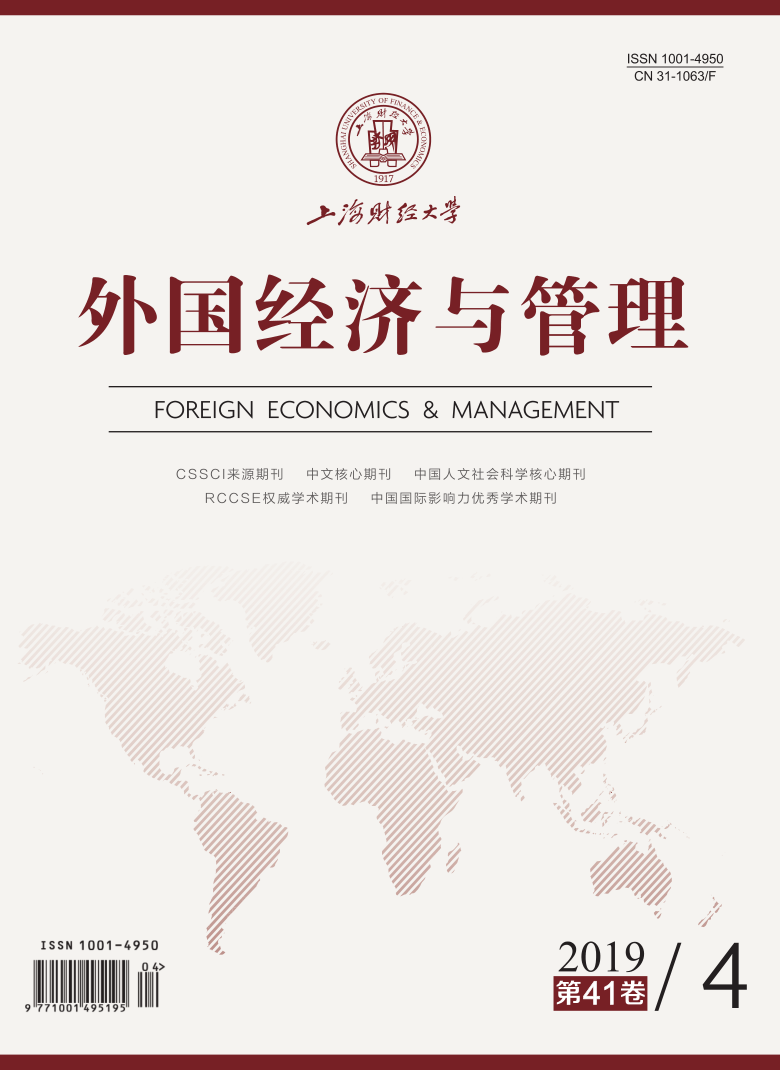联盟关系断裂对理解联盟关系稳定性、企业网络动态性和联盟绩效有重要意义。本文对国外关于联盟关系解除、企业退出联盟的相关文献进行梳理。首先,从多个理论视角,对联盟关系断裂的定义、内涵和企业行为动机进行归纳,发现企业存在主动结束联盟关系的动机和行为。然后,围绕相关的工具和社会因素,对影响企业、企业的二元联盟关系以及联盟网络的关系断裂的前置因素、情境因素,以及联盟关系断裂的后果的相关文献进行述评。研究发现,现有关于联盟关系断裂的前因研究成果十分丰富,但研究结论零散、缺乏整合;同时,关于联盟关系断裂的后果研究还处于起步阶段,相关研究问题较多。最后,从前因、潜在后果以及研究方法等方面,提出联盟关系断裂研究的未来方向。
联盟关系断裂研究述评与未来展望
摘要
参考文献
1 Ahuja G, Polidoro Jr F, Mitchell W. Structural homophily or social asymmetry? The formation of alliances by poorly embedded firms[J]. Strategic Management Journal,2009, 30(9): 941-958 DOI:10.1002/smj.v30:9
2 Baker W E, Faulkner R R, Fisher G A. Hazards of the market: The continuity and dissolution of interorganizational market relationships[J]. American Sociological Review,1998, 63(2): 147-177 DOI:10.2307/2657321
3 Bakker R M. Stepping in and stepping out: Strategic alliance partner reconfiguration and the unplanned termination of complex projects[J]. Strategic Management Journal,2016, 37(9): 1919-1941 DOI:10.1002/smj.2429
5 Chung C C, Beamish P W. The trap of continual ownership change in international equity joint ventures[J]. Organization Science,2010, 21(5): 995-1015 DOI:10.1287/orsc.1090.0489
6 Cui A S, Calantone R J, Griffith D A. Strategic change and termination of interfirm partnerships[J]. Strategic Management Journal,2011, 32(4): 402-423 DOI:10.1002/smj.881
7 Das T K, Teng B S. Instabilities of strategic alliances: An internal tensions perspective[J]. Organization Science,2000, 11(1): 77-101 DOI:10.1287/orsc.11.1.77.12570
9 Dyer J H, Singh H. The relational view: Cooperative strategy and sources of interorganizational competitive advantage[J]. Academy of Management Review,1998, 23(4): 660-679 DOI:10.5465/amr.1998.1255632
10 Greve H R, Baum J A C, Mitsuhashi H, et al. Built to last but falling apart: Cohesion, friction, and withdrawal from interfirm alliances[J]. Academy of Management Journal,2010, 53(2): 302-322 DOI:10.5465/amj.2010.49388955
11 Gulati R. Social structure and alliance formation patterns: A longitudinal analysis[J]. Administrative Science Quarterly,1995, 40(4): 619-652 DOI:10.2307/2393756
12 Gulati R. Alliances and networks[J]. Strategic Management Journal,1998, 19(4): 293-317 DOI:10.1002/(ISSN)1097-0266
13 Hamel G. Competition for competence and interpartner learning within international strategic alliances[J]. Strategic Management Journal,1991, 12(S1): 83-103 DOI:10.1002/(ISSN)1097-0266
15 Helfat C E, Eisenhardt K M. Inter-temporal economies of scope, organizational modularity, and the dynamics of diversification[J]. Strategic Management Journal,2004, 25(13): 1217-1232 DOI:10.1002/(ISSN)1097-0266
16 Hernandez E, Sanders W G, Tuschke A. Network defense: Pruning, grafting, and closing to prevent leakage of strategic knowledge to rivals[J]. Academy of Management Journal,2015, 58(4): 1233-1260 DOI:10.5465/amj.2012.0773
17 Lau D C, Murnighan J K. Demographic diversity and faultlines: The compositional dynamics of organizational groups[J]. Academy of Management Review,1998, 23(2): 325-340 DOI:10.5465/amr.1998.533229
18 Makino S, Chan C M, Isobe T, et al. Intended and unintended termination of international joint ventures[J]. Strategic Management Journal,2007, 28(11): 1113-1132 DOI:10.1002/(ISSN)1097-0266
19 Mintzberg H, Waters J A. Of strategies, deliberate and emergent[J]. Strategic Management Journal,1985, 6(3): 257-272 DOI:10.1002/(ISSN)1097-0266
20 Mitsuhashi H, Greve H R. A matching theory of alliance formation and organizational success: Complementarity and compatibility[J]. Academy of Management Journal,2009, 52(5): 975-995 DOI:10.5465/amj.2009.44634482
21 Moran P. Structural vs. relational embeddedness: Social capital and managerial performance[J]. Strategic Management Journal,2005, 26(12): 1129-1151 DOI:10.1002/(ISSN)1097-0266
22 Nahapiet J, Ghoshal S. Social capital, intellectual capital, and the organizational advantage[J]. Academy of Management Review,1998, 23(2): 242-266 DOI:10.5465/amr.1998.533225
23 Polidoro Jr F, Ahuja G, Mitchell W. When the social structure overshadows competitive incentives: The effects of network embeddedness on joint venture dissolution[J]. Academy of Management Journal,2011, 54(1): 203-223 DOI:10.5465/amj.2011.59215088
24 Powell W W, Koput K W, Smith-Doerr L. Interorganizational collaboration and the locus of innovation: Networks of learning in biotechnology[J]. Administrative Science Quarterly,1996, 41(1): 116-145 DOI:10.2307/2393988
25 Rosenkopf L, Padula G. Investigating the microstructure of network evolution: Alliance formation in the mobile communications industry[J]. Organization Science,2008, 19(5): 669-687 DOI:10.1287/orsc.1070.0339
26 Rowley T J, Greve H R, Rao H, et al. Time to break up: Social and instrumental antecedents of firm exits from exchange cliques[J]. Academy of Management Journal,2005, 48(3): 499-520 DOI:10.5465/amj.2005.17407914
28 Vasudeva G, Anand J. Unpacking absorptive capacity: A study of knowledge utilization from alliance portfolios[J]. Academy of Management Journal,2011, 54(3): 611-623 DOI:10.5465/amj.2011.61968108
29 Xia J. Mutual dependence, partner substitutability, and repeated partnership: The survival of cross-border alliances[J]. Strategic Management Journal,2011, 32(3): 229-253 DOI:10.1002/smj.v32.3
30 Zhang J J, Zhao W, Zhang Y L. Institutional transformation and changing networking patterns in China[J]. Management and Organization Review,2016, 12(2): 303-331 DOI:10.1017/mor.2015.50
31 Zhelyazkov P I, Gulati R. After the break-up: The relational and reputational consequences of withdrawals from venture capital syndicates[J]. Academy of Management Journal,2016, 59(1): 277-301 DOI:10.5465/amj.2013.0768
引用本文
和欣, 陈传明, 郑莹, 等. 联盟关系断裂研究述评与未来展望[J]. 外国经济与管理, 2019, 41(4): 31-44.
导出参考文献,格式为:
下一篇:负价顾客契合研究述评与展望





 , 1
, 1 5758
5758  8616
8616

